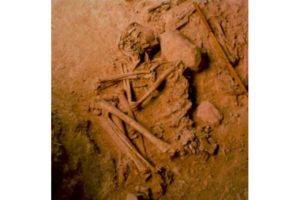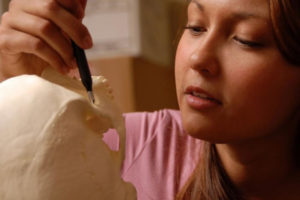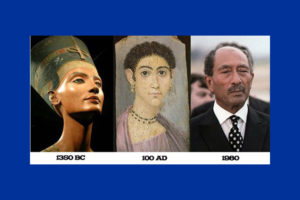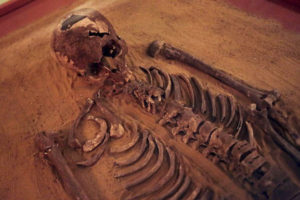The first official slave owner in colonial America was a black man, not white; the Arab Slave trade in Negroes was far greater and much longer lasting than the transatlantic slave trade; the founder of the southern state of Georgia banned both slavery and Africans from the state; large numbers of “free blacks” owned black slaves; and less than 5 percent of pre-Civil War American families actually had slaves.
These are some of the facts about slavery in America which are deliberately hidden from establishment histories of slavery in America, which are all designed to blame white Americans for “racism” and “slavery” and induce a completely false sense of guilt among whites.
Fact 1: The first official slave owner in America was an Angolan who adopted the European name of Anthony Johnson. He was sold to slave traders in 1621 by an enemy tribe in his native Africa, and was registered as “Antonio, a Negro” in the official records of the Colony of Virginia. He went to work for a white farmer as an indentured servant.
Prior to 1654, all Africans in the thirteen colonies were held in indentured servitude and were released after a contracted period with many of the indentured receiving land and equipment after their contracts for work expired. Johnson would later take ownership of a large plot of farmland after the expiration of his contract and, using the skills he had learned during his indentured labor service, Johnson became moderately successful.
By July 1651 Johnson had five indentured servants of his own. In 1664, he brought a case before Virginia courts in which he contested a suit launched by one of his indentured servants, a Negro who adopted the name of John Casor. Johnson won the suit and retained Casor as his servant for life, who thus became the first official and true slave in America.
Thus the accusation that whites “started slavery” in America is utterly untrue: blacks in Africa sold each other as slaves, and the first true lifelong slave in America was owned by a black man, not a white.
Fact 2: The transatlantic slave trade was dwarfed by the Arab or Muslim slave trade, which lasted from 650 AD to 1900 AD. It is estimated that a minimum of 18 million Africans were enslaved by Arab slave traders, and that over one million Europeans were enslaved by the Muslim world during the same period.
The Muslim slave trade saw Africans exported to regions throughout the Middle East and even to India, while the Europeans were captured in raids in Spain, Italy, France, Britain, and Ireland. These raids were launched from North Africa, and during the Islamic occupation of Iberia and southern Italy, from the latter regions as well.
The invasion of southeastern Europe by the Ottoman Turks saw even more Europeans enslaved into the Muslim world—but their numbers are unknown.
The Muslim trade in slaves, both black and white, was therefore longer lasting and far more extensive than the transatlantic slave trade—but there are today no cries of “Arab guilt” or demands for reparations against Muslim nations.
Fact 3: James Oglethorpe (1696–1785) was a British general who founded the colony of Georgia in 1732. From the very beginning, Oglethorpe ensured that slavery was banned in the colony, and that Africans were barred from entering the territory. The colony’s founding charter also forbid Roman Catholicism from being established in the region.
It was only in 1750, after Oglethorpe had left the colony, that the ban on slavery was lifted.
Fact 4: Many free Negroes owned black slaves; in fact, in numbers disproportionate to their representation in society at large.
In 1830, a fourth of the free Negro slave masters in South Carolina owned 10 or more slaves; eight owning 30 or more.
According to federal census reports, on June 1, 1860 there were nearly 4.5 million Negroes in the United States, with fewer than four million of them living in the southern slaveholding states.
Of the blacks residing in the South, 261,988 were not slaves. Of this number, 10,689 lived in New Orleans. Black Duke University professor John Hope Franklin recorded that in New Orleans over 3,000 free Negroes owned slaves, or 28 percent of the free Negroes in that city.
In 1860 there were at least six Negroes in Louisiana who owned 65 or more slaves. The largest number, 152 slaves, were owned by the widow C. Richards and her son P.C. Richards, who owned a large sugar cane plantation.
Another Negro slave magnate in Louisiana, with over 100 slaves, was Antoine Dubuclet, a sugar planter whose estate was valued at (in 1860 dollars) $264,000.
In Charleston, South Carolina in 1860, 125 free Negroes owned slaves; six of them owning 10 or more. Of the $1.5 million in taxable property owned by free Negroes in Charleston, more than $300,000 represented slave holdings. In North Carolina 69 free Negroes were slave owners.
(Source: Black Masters: A Free Family of Color in the Old South, Michael P. Johnson and James L. Roak New York: Norton, 1984.)
Fact 5: In 1860 only a small minority of whites owned slaves. According to the US census report for that last year before the Civil War, there were nearly 27 million whites in the country. Some eight million of them lived in the slaveholding states.
The census also determined that there were fewer than 385,000 individuals who owned slaves. Even if all slaveholders had been white, that would amount to only 1.4 percent of whites in the country (or 4.8 percent of southern whites owning one or more slaves).
The figures show conclusively that, when free, blacks disproportionately became slave masters in pre-Civil War America. The statistics outlined above show that about 28 percent of free blacks owned slaves—as opposed to less than 4.8 percent of southern whites, and dramatically more than the 1.4 percent of all white Americans who owned slaves.








This was a wonderful read! I csnt believe how crazy it was back then there had to be so many poor people trying to make it…wow we may have to go back to those days with the way there’s no jobs. Wish out abuse I would say be The Good Samaritian.
Thank You
interesting site…i noticed a typo in the above article >
By July 1651 Johnson had five indentured servants of his own. In 1864, he brought a case before Virginia courts in which he contested a suit launched by one of his indentured servants
> must be 1664 not 1864
& you never mentioned Jewish complicity in slavery >
Jewish Involvement In
Black Slave Trade
To The Americas
By Rabbi Marc Lee Raphael
http://rense.com/general69/invo.htm
Thanks for clarifying that this should be shared every day on national news